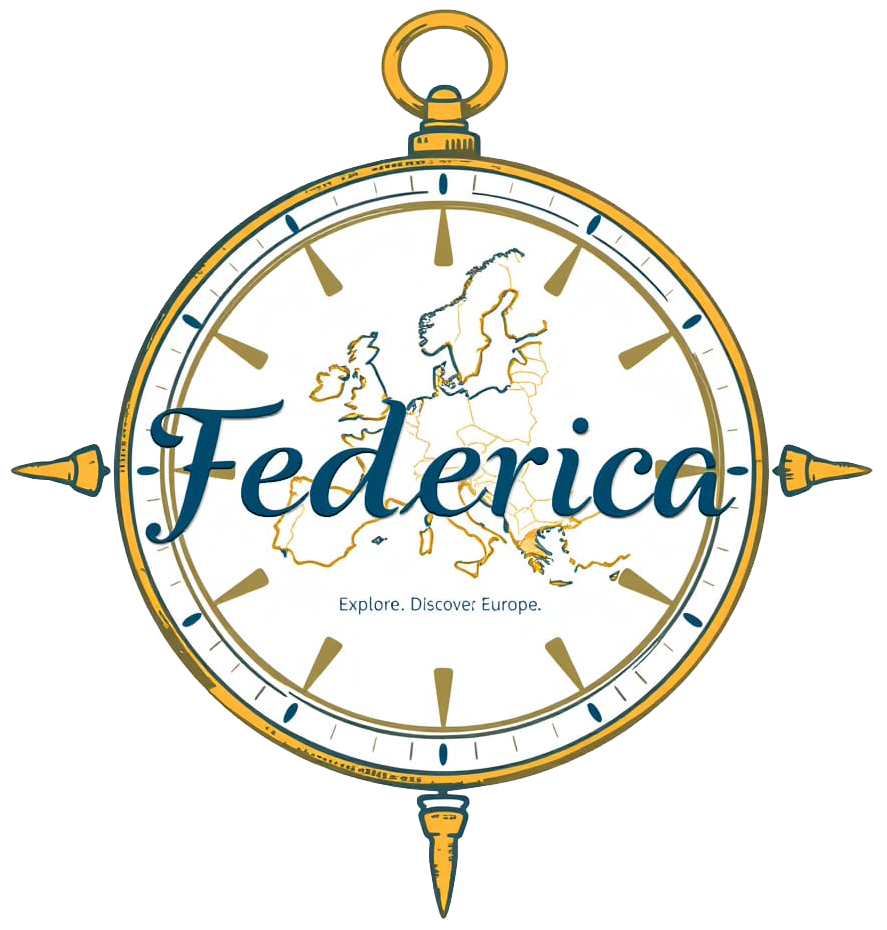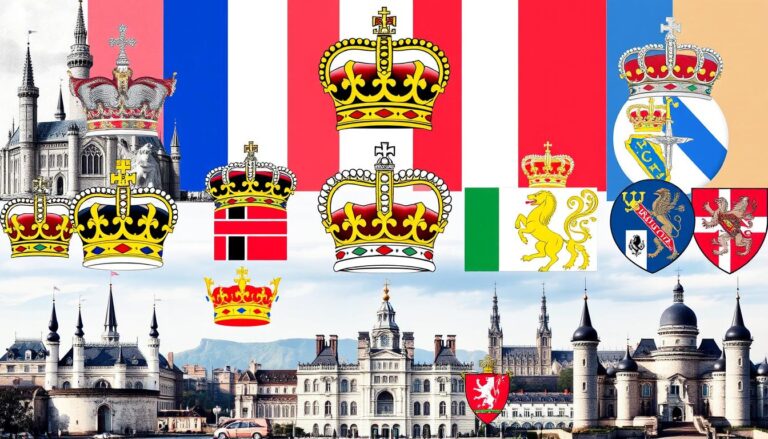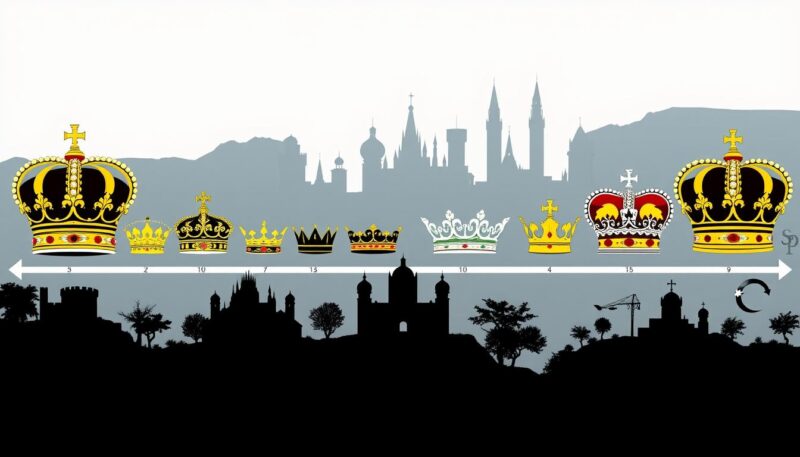In an age where republican models of governance dominate the political landscape, the concept of monarchy still holds a remarkable and enduring fascination. Today, Europe is home to twelve sovereign monarchies, a symbol of centuries-old tradition seamlessly blending with modernity. You may wonder how these monarchies have not only survived but thrived amid substantial geopolitical and societal changes. The answer lies in their unique ability to adapt and transform whilst maintaining the rich ceremonials and heritage that make them stand out. Through the pages of history, from absolute rule to constitutional roles, European monarchies have undergone significant changes, reflecting the shifts in power and political thought over centuries.
Countries such as Denmark, Norway, Sweden, the United Kingdom, and Spain offer insightful perspectives into these transformations. Historically, these nations were once absolute monarchies, with sovereigns wielding substantial power over their dominions. However, the tides of time and the waves of democratic movements necessitated a shift towards constitutional frameworks. Modern European monarchies, therefore, are primarily constitutional, where the royal family performs ceremonial duties while political power is exercised by elected bodies. This evolution underscores the resilience and continued relevance of monarchies in Europe, as they have managed to preserve their legacy while embracing democratic values and contemporary societal norms.
At the start of the 20th century, the landscape of European governance began to change dramatically, as republicanism started gaining momentum. Back then, only France, Switzerland, and San Marino had adopted republican forms of government. Over the years, republicanism spread across the continent, resulting in numerous countries transitioning from monarchies to republics. However, the twelve present-day European monarchies stand as testaments to the historical momentum of monarchy, offering a fascinating interplay between tradition and modernity in the 21st century. Their longevity accentuates a deep-rooted European royal tradition, which continues to captivate both nationals and global observers alike.
Overview of Current European Monarchies
Europe is a unique continent where modernity coexists with traditions, demonstrated by the twelve current monarchs in Europe. Among these, we find diverse structures ranging from kingdoms and principalities to a grand duchy and theocratic sovereign states.
List of Current European Monarchies
Below is a detailed list of the current monarchies in Europe, highlighting the rich tapestry of European kings and queens:
- Kingdoms: Denmark, Norway, Sweden, the United Kingdom, Spain, the Netherlands, and Belgium.
- Principalities: Andorra, Liechtenstein, and Monaco.
- Grand Duchy: Luxembourg.
- Theocratic Elective Monarchy: Vatican City.
The Swedish royal family, led by King Carl XVI Gustaf and Queen Silvia, was pivotal in ensuring the Act of Succession became gender-neutral in 1980. Meanwhile, in the Netherlands, the distinction between the Dutch royal family and the Dutch royal house was defined clearly under the 2002 Royal House Membership Act.
Classification of European Monarchies
The predominant governance structure among these monarchical nations is the constitutional monarchy, where monarchs have largely symbolic roles. Exceptions exist, as seen in Monaco and Liechtenstein, where their princes hold significant political power, marking them as semi-constitutional monarchies. Vatican City stands distinct as a theocratic monarchy, where the elected Pope Francis exercises absolute authority over the smallest independent nation-state.
Interestingly, the Grand Duchy of Luxembourg is notable for its proactive advocacy against sexual violence through Grand Duchess Maria Teresa’s ‘Stand Speak Rise Up!’ initiative. Furthermore, in the co-principality of Andorra, unique arrangements see the Bishop of Urgell and the French President share monarchical responsibilities, a tradition entrenched since the 1278 treaty between Spain and France.
Another compelling aspect pertains to the hereditary succession traditions. Since 1939, all reigning hereditary monarchs in Europe trace their lineage to John William Friso, Prince of Orange. However, following Queen Elizabeth II’s death in 2022, Louis IX of Hesse-Darmstadt emerged as the more recent common ancestor. King Charles III reconnects with this legacy, maintaining the nearly 1,200-year bloodline of the British monarchy.
| Monarchy | Type | Current Monarch |
|---|---|---|
| Denmark | Constitutional Kingdom | Queen Margrethe II |
| Norway | Constitutional Kingdom | King Harald V |
| Sweden | Constitutional Kingdom | King Carl XVI Gustaf |
| United Kingdom | Constitutional Kingdom | King Charles III |
| Spain | Constitutional Kingdom | King Felipe VI |
| Netherlands | Constitutional Kingdom | King Willem-Alexander |
| Belgium | Constitutional Kingdom | King Philippe |
| Andorra | Co-Principality | Bishop of Urgell & French President |
| Liechtenstein | Semi-Constitutional Principality | Prince Hans-Adam II |
| Monaco | Semi-Constitutional Principality | Prince Albert II |
| Luxembourg | Grand Duchy | Grand Duke Henri |
| Vatican City | Theocratic Elective Monarchy | Pope Francis |
The continuation of these historic institutions in compromise with modern governance highlights how European kings and queens have adjusted to their symbolic roles, with a few retaining significant influence within their nations.
The Evolution of Monarchies Over Centuries
The history of European monarchies is a fascinating chronicle of power dynamics, shifting political landscapes, and evolving governance. The origins of monarchies trace back to tribal kingship in prehistoric Europe. As societies progressed, so did the complexity of their leadership structures. The palace economies of Mycenaean Greece and militaristic setups of Sparta exemplify the early forms of European monarchy significance.
Origins and Historical Development
Monarchies in Europe have seen a vast transformation from their early inception. The period of Hellenistic history marked a significant shift from monarchies to more diversified forms of governance, including elected and mixed constitutions during the rise and fall of the Roman Empire. This era laid the groundwork for the medieval and early modern periods, characterised by the divine right of kings. Monarchs like Charles V, Francis I, and Elizabeth I were instrumental in strengthening their realms through robust bureaucracies during the Renaissance.
Transition to Modern Constitutional Monarchies
The evolution of European monarchy has been significantly shaped by revolutions, wars, and political upheavals. The collapse of monarchies in France (1789), Russia (1917), and during World War I in Austria, Germany, and the Ottoman Empire, marked a significant turning point. The rise of social and nationalist movements further challenged and redefined the roles of monarchs. Today’s monarchies are predominantly constitutional, where the monarchs’ function is ceremonial, and they play a symbolic role as cultural figureheads, while elected legislatures govern the nations.
| Country | Current Monarch | System |
|---|---|---|
| United Kingdom | Charles III | Constitutional |
| Belgium | Philippe | Constitutional |
| Norway | Harald V | Constitutional |
| Monaco | Albert II | Constitutional |
| Vatican City | Pope Francis | Elective |
The shift towards constitutional monarchies has ensured the continuity and relevance of the monarchy in modern governance. The European monarchy significance is evident as these institutions provide stability, heritage, and cultural continuity in their respective nations. Through this evolution, it is clear that monarchies have adapted to the needs of contemporary societies while retaining their historical essence.
Conclusion
The sustained existence of monarchies in modern Europe is a testament to their remarkable ability to adapt and evolve through centuries of cultural, political, and social changes. Despite the gradual shift towards republican forms of government, these enduring institutions continue to serve as powerful symbols of national identity and cultural heritage. The role of European monarchs, though largely ceremonial today, encapsulates a historical continuity that remains integral to the cultural fabric of their respective nations.
Monarchy vs republic in Europe has long been a topic of robust debate. In Flanders, Belgium, a significant portion of the population believes the role of the Belgian monarchy should be modified to be more ceremonial, while a noteworthy percentage calls for the establishment of a republic. On the other hand, areas like Wallonia view the monarchy as a key safeguard against separatism, illustrating how the political power of European monarchies can still impact modern governance and national unity.
The political power of European monarchies today is mostly symbolic, yet they continue to appeal to citizens and observers worldwide by offering a unique blend of tradition and modernity. As societies evolve, the relevance and support for these institutions fluctuate, reflecting broader cultural and political dynamics. Consequently, monarchies such as those in Belgium, Spain, and the United Kingdom continue to spark discussions and studies from both scientific and societal perspectives, showcasing their enduring significance in shaping the political landscape of Europe.


